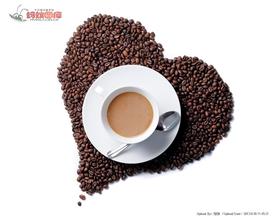Description of taste and flavor of Brazilian coffee A brief introduction to the producing areas of varieties by the method of baking degree treatment
Description of taste and flavor of Brazilian coffee A brief introduction to the producing areas of varieties by the method of baking degree treatment
There are many large farms in Brazil, which run endless coffee plantations. They use machines to harvest and dry them. They are so efficient in automation that they regard coffee as a general agricultural material and completely abandon the flavor and flavor.
As a result, many select coffee companies simply do not sell Brazilian beans so as not to demean themselves. In select coffee shops, there are still occasional Brazilian "santos" coffee, but they are all "Bourbon Santos" (bourban santos) rather than low-priced "Ping Dou Santos". Santos is a descendant of the bourbon species, hence the name for the port of Santos export. In the first three or four years before the coffee tree began to bear fruit, the beans produced by this kind of coffee tree were small and curved, with excellent flavor, and became the "bourbon Santos".
Since the introduction of coffee trees from French Guiana (Guyana) in 1720, coffee production has gradually become a science. Before 1990, the Brazilian government carried out strict monitoring of the coffee industry, with both strict intervention and price protection measures, and the state has been implementing minimum price protection measures for farmers, resulting in coffee overproduction. Before World War II, the surplus stock reached 78 million bags, which had to be burned by fire or thrown into the water to destroy.
In terms of natural conditions, Brazil is in the tropics, with a tropical rain forest climate in the north, hot and humid all the year round, suitable for tropical crops, coffee trees are sunny crops, and sufficient sunlight is the condition for their growth.
The traditional roaster is drum-type, which has the characteristics of stewing, which will make the coffee beans more mature and full-bodied. The household drum roaster can bake half a pound of coffee beans at a time, and the baking time (including cooling and producing beans) takes about 210.25 minutes. If you want to roast deeply, you only need to increase the time. When in use, just put in the raw beans, set the baking degree, press the start button, and the roaster can complete it automatically from baking to cooling.

Important Notice :
前街咖啡 FrontStreet Coffee has moved to new addredd:
FrontStreet Coffee Address: 315,Donghua East Road,GuangZhou
Tel:020 38364473
- Prev

Tanzania coffee bean flavor description taste treatment grinding scale production area
Tanzania coffee bean flavor description grinding scale production area Kilimanjaro AA is the highest grade of beans, all aspects of quality are high. Medium or more moderate after baking has a strong aroma. Suitable for making individual or iced coffee Tanzania currently produces 50,000 tons of coffee a year, making it the fourth largest coffee producer in Africa. Due to the sharp rise in international coffee prices last year
- Next

Brewing of Vietnamese Coffee Bean varieties by graphic Flavor description
The geographical location of Vietnam is very favorable for coffee cultivation. The southern part of Vietnam has a hot and humid tropical climate, which is suitable for growing ROBUSTA coffee and the northern part is suitable for growing ARABICA coffee. Coffee production in Vietnam has the following characteristics: (1) since there is no effective way to deal with fallen leaves, in the early 1980s,
Related
- Detailed explanation of Jadeite planting Land in Panamanian Jadeite Manor introduction to the grading system of Jadeite competitive bidding, Red bid, Green bid and Rose Summer
- Story of Coffee planting in Brenka region of Costa Rica Stonehenge Manor anaerobic heavy honey treatment of flavor mouth
- What's on the barrel of Blue Mountain Coffee beans?
- Can American coffee also pull flowers? How to use hot American style to pull out a good-looking pattern?
- Can you make a cold extract with coffee beans? What is the right proportion for cold-extracted coffee formula?
- Indonesian PWN Gold Mandrine Coffee Origin Features Flavor How to Chong? Mandolin coffee is American.
- A brief introduction to the flavor characteristics of Brazilian yellow bourbon coffee beans
- What is the effect of different water quality on the flavor of cold-extracted coffee? What kind of water is best for brewing coffee?
- Why do you think of Rose Summer whenever you mention Panamanian coffee?
- Introduction to the characteristics of authentic blue mountain coffee bean producing areas? What is the CIB Coffee Authority in Jamaica?

